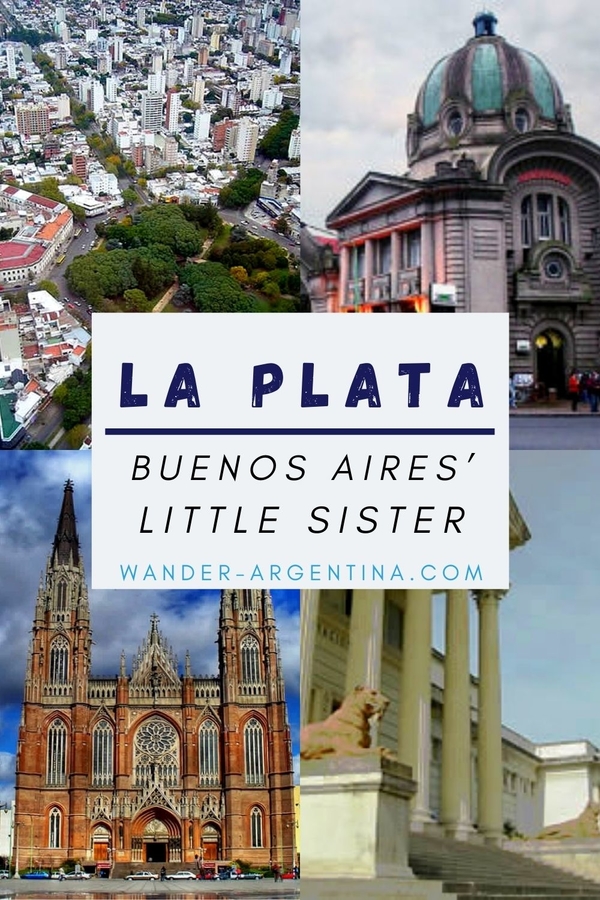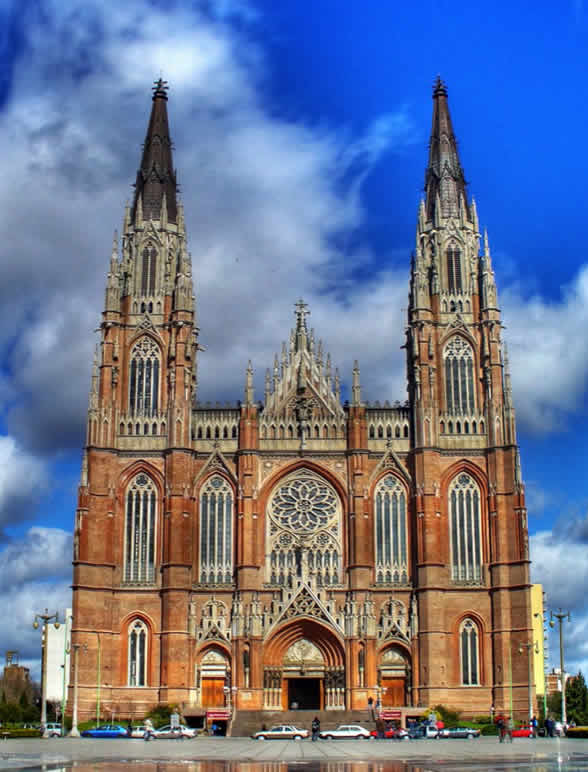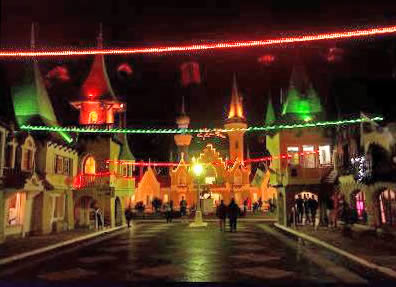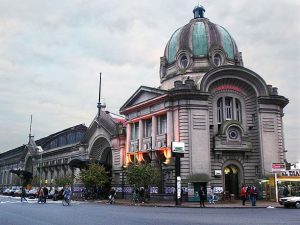La Plata is not the first place on a traveler’s Argentina itinerary but it’s worth the one-hour trip south of Buenos Aires to experience stunning architecture, lovely green spaces and a vibrant university scene.
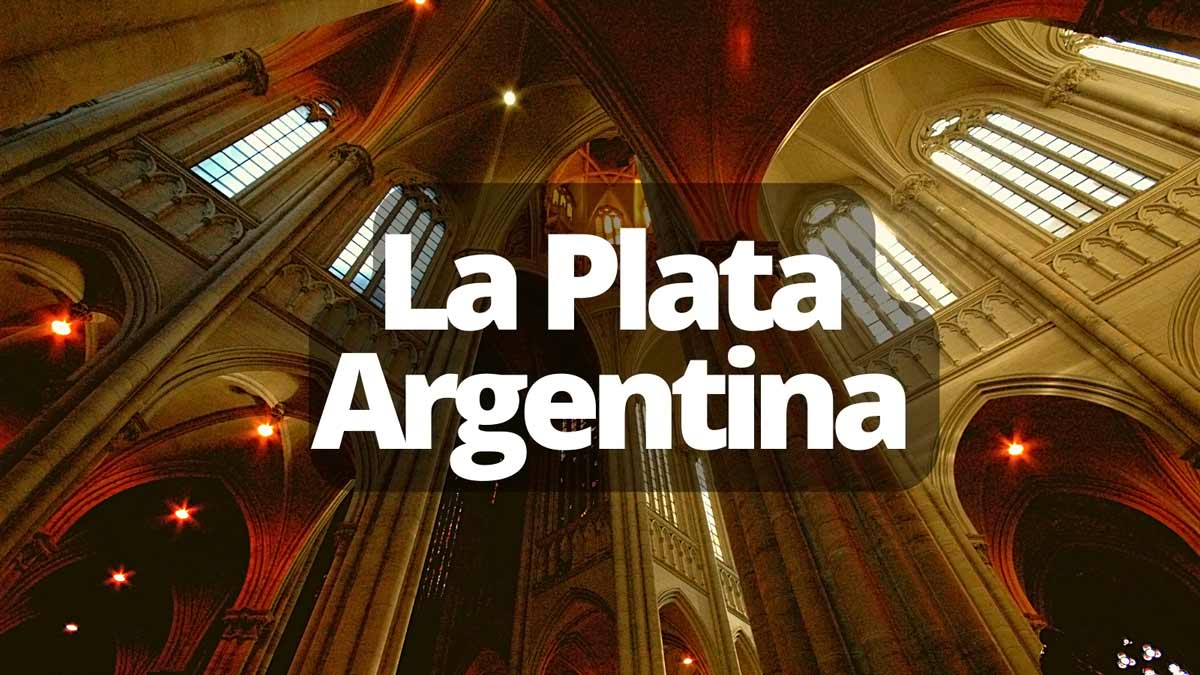
The baby sister to Buenos Aires, La Plata is the capital of Buenos Aires province and a very important city in the history and development of Argentina.
Billing itself as the ‘city for everyone,’ La Plata’s nearly 600,000 residents are proud of their heritage and are quick to remind tourists that they do not share the hurried, unfriendly stereotype of their Porteño (Buenos Aires) neighbors.
Home to three universities, students can be seen cycling all over La Plata, creating a youthful city with a vibe reminiscent of Oxford or Princeton, with a South American twist.
La Plata’s History
When it was announced in 1882 that La Plata would be the capital of the Buenos Aires province, the city — looked to Europe for design cues.
They constructed a geometrically perfect grid system crossed by diagonal avenues.
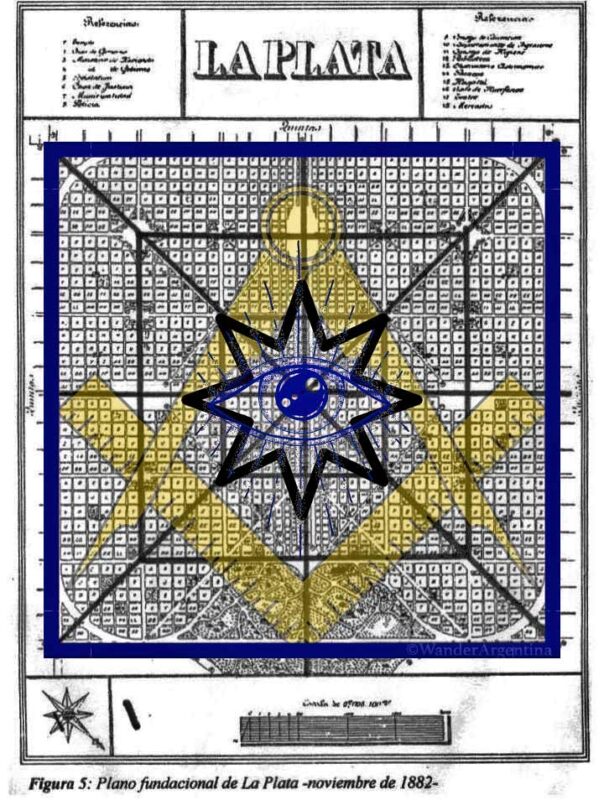
This city was founded on November 19th, 1882, by Governor and free mason, Dardo Rocha.
Rocha became a Freemason in 1858, at the age of 20.
Art and architecture derived from the fraternal order set the tone for the synchronicity and symmetry in La Plata.
There’s many symbols about freemasonry all around the city, not only on the layout of it, but also on every building dating to the city’s founding.
The original layout included 23 parks, including the in-city forest known as the Paseo del Bosque.
The streets are embellished with a variety of tree species, such as lime, jacarandas and orange trees intended to help orient people with visual disabilities.
Due to its forward-thinking design at the time, La Plata was coined the ‘City of the Future‘ at the 1889 World’s Fair in Paris, the year the Eiffel Tower was unveiled.
The city’s many plazas are flanked with bars and restaurants and — in true Argentine style — most are open 24 hours a day.
Walking along the streets and avenues, the real beauty of La Plata is that there is a plaza every six blocks, creating an open ambiance and providing the city with a huge amount of green space.
The ‘City of Diagonals’ as its known is easily navigated on foot, with the main sights being located along Avenidas 51 and 53.
Plaza Moreno, a huge and perfectly maintained square, is the geographical center of the city.
The city’s two most important sites are located at opposite ends of this plaza.
The first of these is the neo-Gothic La Plata Cathedral, one of South America’s largest houses of worship.
Construction began in 1885 but the enormous cathedral wasn’t consecrated until 1932.
On the opposite side is the impressive German Renaissance style, Palacio Municipal (City Hall).
These opposing sites portray what people and the government most cared about at the time of the city’s development: religion and politics.
Sights of Interest in La Plata
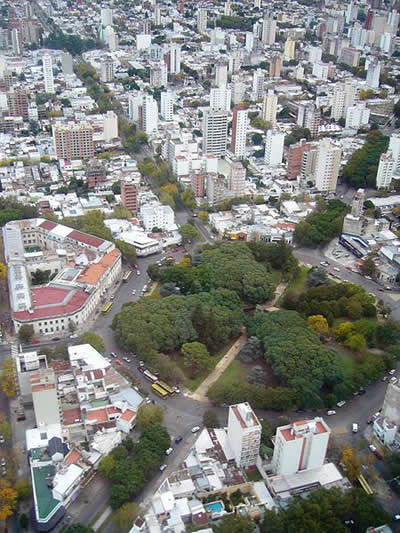
Heading down Avenida 51, one passes Teatro Argentino, Argentina’s second most important lyric opera house after Buenos Aires’ Teatro Colón.
Originally a classic Italian opera house, the building was destroyed in a fire in 1977 and rebuilt with an ugly, concrete modern design, but it retains excellent acoustics.
Carrying on a few more blocks, one reaches Plaza San Martin, the governmental center of the city.
The square is flanked on one side by the Palacio de la Legislatura (Provincial Legislature), also in German Renaissance style.
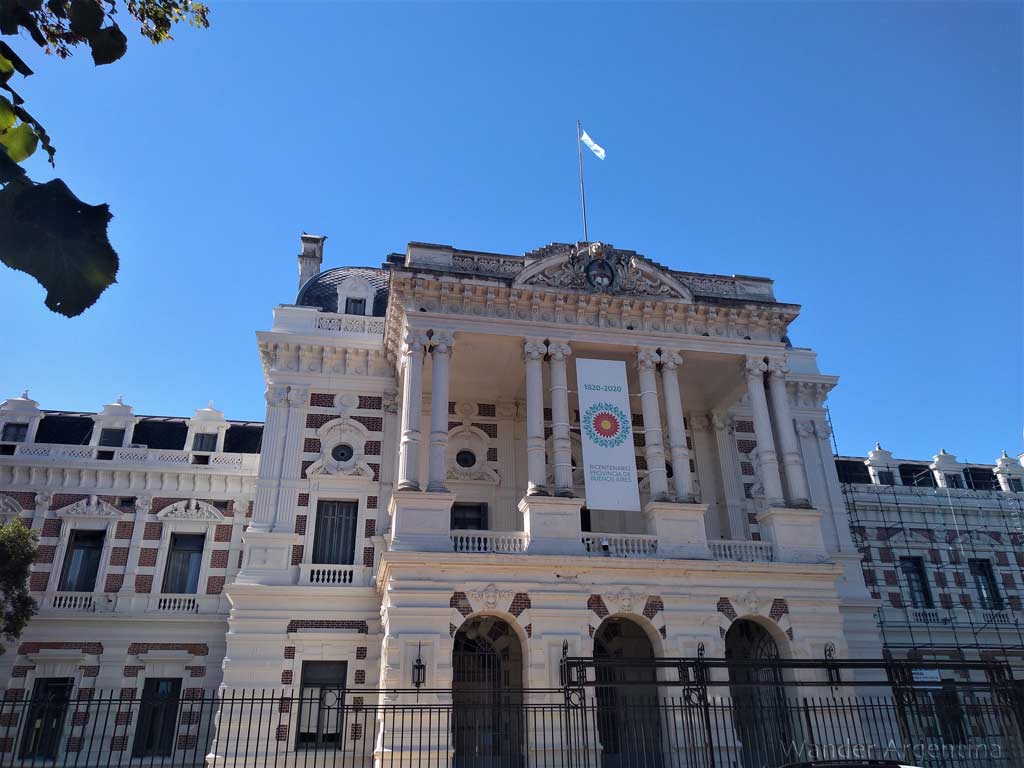
photo: Lu Torres
On the other side of the plaza is the Neo Renaissance Casa de Gobierno (Government House designed by Flemish architect, Jules Dormal.
Arriving at the end of Avenida 51, one is treated to another highlight of La Plata: Paseo del Bosque (Forest Path), the city’s largest green space.
It hosts botanical gardens, open-air theater and an observatory.
Located within the park is Museo de La Plata (La Plata Museum) with its beautiful 1888 neoclassical design.
It is viewed by many as a highlight of La Plata, and is globally regarded as one of the world’s most important natural history and science museums.
The collection includes three million fossils and relics, an amphitheater and a huge library for researchers.
Those interested in architecture may want to check out Casa Curutchet, the former home of Dr. Pedro Curutchet, noted for its interesting design accommodating a tree that goes from the first floor garden to the terrace.
The house was declared a National Historic Monument in 1987 and today houses the Province of Buenos Aires’ Association of Architects.
La Plata’s circa 1951 theme park, La República de los Ñinos (City of Children) a little west of the city is a possible excursion for families.
The theme park’s construction began under a previous administration but became a pet project of Eva Perón and was inaugurated under her husband and Argentina’s most famous president, Juan Domingo Perón.
The theme park is just one sign of the Peróns’ involvement in the shaping of La Plata during his presidency — the city itself was renamed Cuidad Eva Perón between the years of 1952-1955.
The City of Children is Eva’s grandest legacy in La Plata and claims to be Latin America’s first theme park and, dubiously, Walt Disney’s inspiration for Disneyland.
Much calmer than its North American counterpart, this place could be a disappointment for kids looking for fast-paced Disney-like roller coasters but a relief for parent’s needing a bit of tranquility.
Built as a miniature town, there are replicas of government buildings, a petting zoo, a kid’s radio station, a mini Taj Mahal, a pint-sized movie theater and even a miniature prison.
Getting Around La Plata
Rocha’s vision was to build a city that resembled a ‘perfect square’ crossed by diagonal streets that would work as shortcuts.
While it can be confusing to navigate at times, the adventurous logic behind the layout goes hand in hand with La Plata’s development as a new, forward-looking provincial capital.
The streets were numbered instead of named.
Streets that run north to south are even numbers and streets running from east to west streets are odd numbers. There is no 52 street however.
Theories are that instead there exists an underground ‘monumental axis tunnel’ connecting the main public buildings.
The existence of the tunnel can’t be verified though, as this would be a secret kept among the higher ups in Freemasonry.
Getting to La Plata from Buenos Aires
There are a few ways to get to La Plata, making it an easy day trip from Buenos Aires.
By Train
One option is to take the Roca Train from Constitución train station in Buenos Aires and get off at La Plata Station (1 and 44 Street).
The trip takes about one hour and the train is modern, although there may be a lot of people if traveling at peak hours, while commuters are heading home.
By Bus
Another option is to take bus 129 from Retiro station that goes all the way to La Plata.
It’s also possible to catch this bus along the Metrobus line.
In San Telmo it stops at Av. Paseo Colón Y Av. Juan De Garay, in Monserrat on Alsina and México streets, by the Obelisco or along Marcelo T. De Alvear.
See our article on buses in Buenos Aires for help trying to figure out Buenos Aires’ bus system.
To return to Buenos Aires from La Plata by bus is easy, just go to the La Plata Bus terminal and take any bus from platforms 6-12.
By Car
Going by car to get to La Plata only takes 40 minutes and is straight forward.
Head east on Corrientes Avenue until you reach Eduardo Madero Avenue, which turns into Ing. Huergo. Use the right two lanes to take the ramp onto Au Dr. Ricardo Balbín, which is Route National One (RN1).
Make sure you have change, because this is a toll road. After traveling 48 kilometers follow the signs that say ‘La Plata/Ensenada.’ Merge onto Domingo Mercante Avenue (RP11).
At the Néstor Kirchner roundabout, take the 3rd exit to continue straight onto Diagonal 74.
Take the 3rd exit. Continue on from Diagonal 74 onto 115 Street.
Here you’ll see La Plata’s Hippodrome. From there take Diagonal 80 into the center of town.
By Ride Share, Remis or Taxi
A private remis is an option to get to La Plata as is a taxi, although if you catch a random taxi on the street they will likely decline the ride.
If it’s not peak hours one of the ride-sharing services may be a good bet.
The trip will cost under $25 with tolls.
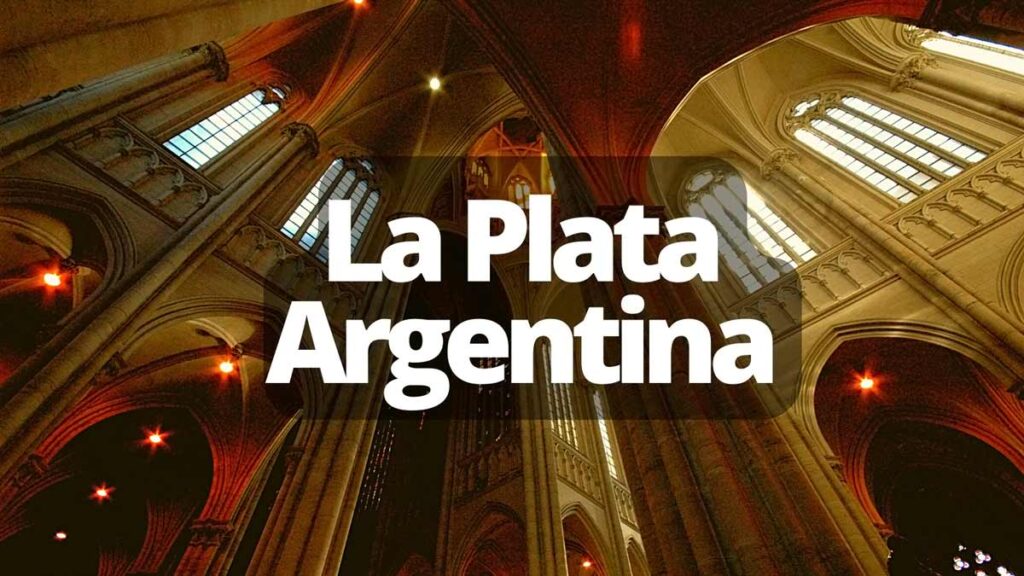
Less than an hour from Buenos Aires, the provincial capital, La Plata was hailed as ‘City of the Future’ at the 1889 World’s Fair. and Today it is a less hectic, youthful destination.
Day tour to La Plata from Buenos Aires.
La Plata’s New Year’s Eve Street Party
One of the most exciting events of the year in La Plata is the Quema de los Muñecos (Burning of the Dolls) on New Year’s Eve.
For over forty years, the college town has celebrated its own version of Spain’s Fallas Festival, when hundreds of effigies are burned in the streets to celebrate the new year.
—by Oliver Buckley
Getting to La Plata from Buenos Aires:
• By train: Metropolitano (Ex Linea Roca) from Constitución station to La Plata station
• By bus: #129 from Retiro, 9 de Julio or Constitución Station
or
– Empresa Costera from Retiro station or Constitución to La Plata terminal/Tel : 0800-222-3433/ 4315-0485
– Empresa Plaza from Once, Retiro or Constitución station to La Plata Terminal/Tel : 0800-333-1970 (departure every 15 minutes)
• By Car: Take 25 de Mayo south toward Puerto Madero until reaching Autopista Buenos Aires-La Plata/ 57 km, 46 minutes.
→ Check prices on rental cars in La Plata
→ Ask about our Day Tour to La Plata
→ La Plata: Places of Interest
